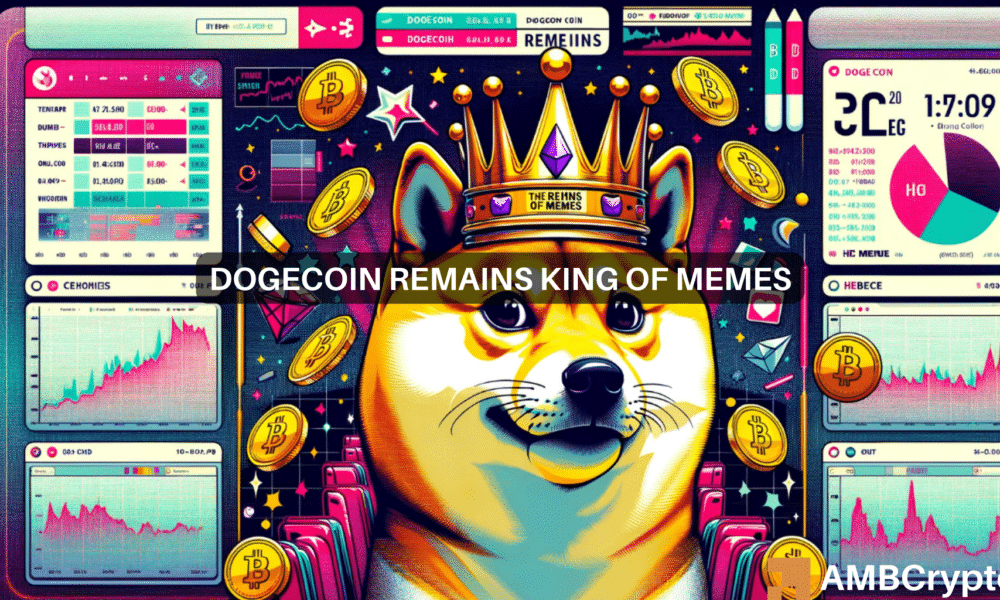Following a similar trajectory to Bitcoin, Dogecoin has shown remarkable performance lately, solidifying its position as the premier memecoin. Both cryptocurrencies have experienced impressive rallies since mid-October, indicating that DOGE remains a dominant player in the market.
Notably, Dogecoin’s market dominance, which dropped to 0.74% in mid-October, has now exceeded 1% for the first time since May, currently standing at 1.04%. This surge can be attributed to the strong bullish momentum that Dogecoin has been experiencing recently.
For context, Dogecoin reached a peak of $0.179 on Tuesday, a price level last seen in April of this year. Its value surged by 74% from its October low to the highest point so far, and by 62% to its current price of $0.168.
However, some investors are questioning whether a cooldown period is on the horizon for DOGE. The memecoin has displayed several signals that suggest profit-taking activity may occur in the near future. For instance, its recent peak aligns with a historical resistance zone, and a minor pullback has already been observed in the past 24 hours.
Furthermore, Dogecoin appeared to be significantly overbought following its recent rally, although the downside was contained, hinting that investors anticipate further bullish momentum.
Continued Accumulation by Dogecoin Whales
Analysis of on-chain data indicates that the recent rally in Dogecoin was fueled by strong demand from major holders. Inflows into large accounts surged from 79.55 million DOGE to 1.36 billion DOGE by October 29.
Conversely, outflows increased from 74.42 million DOGE to 782.45 million DOGE during the same timeframe, illustrating that buying volume from whales far exceeded selling volume.
Will the current level see heightened selling pressure? Data on exchange flows suggests this may already be happening, with inflows surpassing outflows. At present, exchange inflows stand at over 833 million DOGE, whereas outflows are at 597 million DOGE.
The higher exchange inflows compared to outflows could signal a shift towards more sell pressure, possibly driven by profit-taking. This imbalance could explain the elevated inflows relative to outflows.
Although this data indicates the potential for increased selling pressure as the week draws to a close, it is essential to acknowledge the prevailing market optimism. Some investors might opt to retain unrealized profits, anticipating further price appreciation in the months ahead. This scenario could help mitigate any substantial downside risk.

